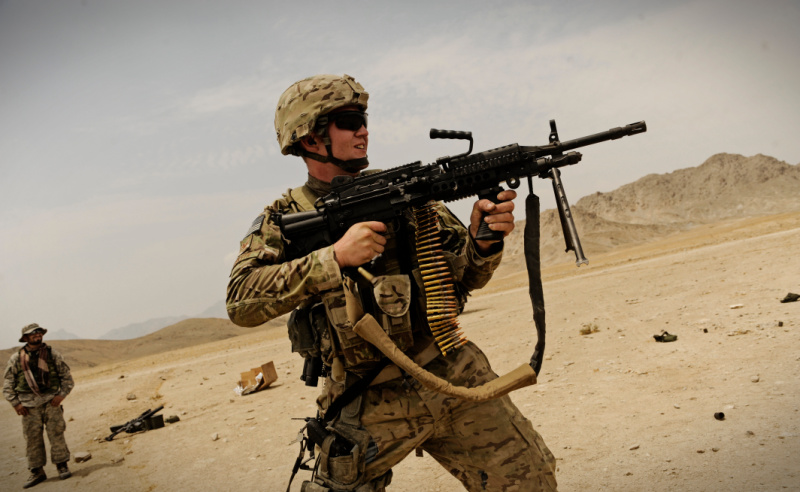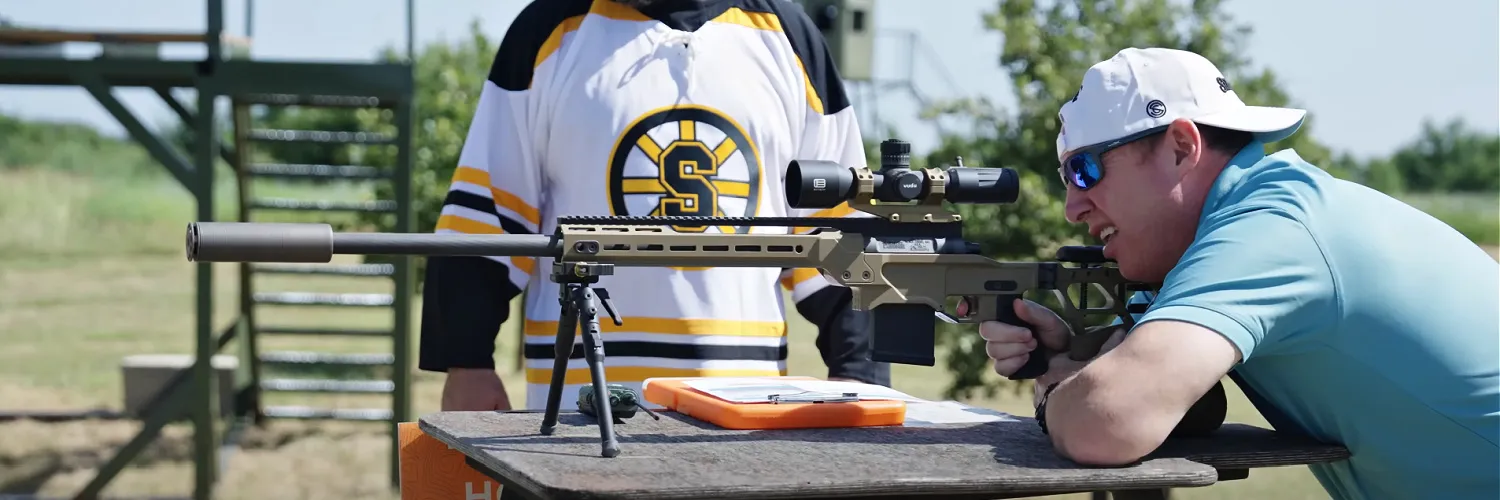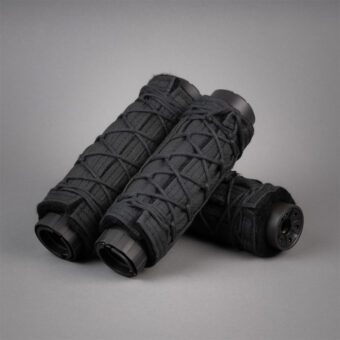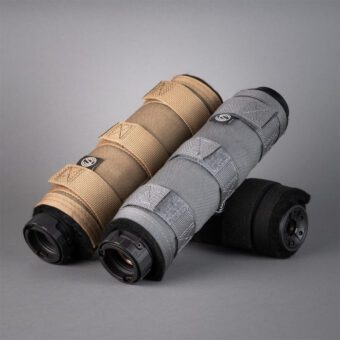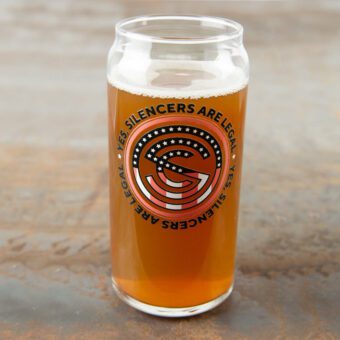Home / All About Silencers / Suppressing Fire…Suppressed!
Suppressing Fire…Suppressed!
Michael Kupari
Today we’re taking a look at a capability that previous generations of operators just didn’t have available to them — the ability to reduce the sound signature of an automatic weapon system while effectively delivering suppressing fire.

There was a time, not long ago, when it was considered impractical to suppress a belt-fed machine gun. Such weapons generate significant amounts of waste heat from their high rates of fire, which can lead to malfunctions, damage the weapon, or even make it unsafe.
Heat Mitigation in Belt-Fed Machine Guns
Many methods have been used to mitigate heat over the years. Going as far back as the Maxim Gun, many of the earliest machine guns were water-cooled, which allowed for excellent cooling but made for a heavy weapon system. This was fine for the trenches of the Great War, but the lack of mobility of such weapons was a significant drawback. In the interwar period, air cooled machine guns became the norm, and remain so today.
Air cooling works, but by itself may not be enough to keep a gun up and running in battle. Other mechanisms for heat dissipation have been devised. For example, most belt-fed machine guns fire from the open bolt. This allows more airflow through the action while the weapon isn’t being fired, using convection to cool the weapon. Since rounds are only chambered at the instant they’re fired, the operator doesn’t have to worry about a cartridge cooking off in the chamber.
Another common feature of most belt-fed or general-purpose machine guns is a quick-change barrel. This allows the machine gunner to quickly remove the barrel, without tools, and replace it with a spare. In this way one barrel is allowed to cool while the other is in use, which improves the gun’s sustained fire capability while also extending the service life of each barrel.
The heat issue has long limited the practical use of sound suppressors on belt-fed weapons.
To put it in the simplest terms, a suppressor turns noise into heat. The hot gasses escaping the muzzle expend their energy into the suppressor baffles, reducing noise and blast. That energy doesn’t simply disappear, however, and suppressors typically get very hot. (So much so that a heat-resistant suppressor cover is a recommended piece of personal protective equipment.)
In previous times, suppressors could predictably be reduced in effectiveness or damaged by excessive heat. This issue was compounded by mounting one on a weapon that can get so hot that the barrel can turn red. Recent advances in suppressor design, however, have made mounting them to belt-fed weapons systems more practical than ever.
SilencerCo currently has twelve suppressors that are full auto rated but there are three that are recommended for belt-fed weapons: the Saker 556 ASR, Saker 556K ASR, and Chimera 300. Let’s take a closer look at them.
Saker ASR
To start with, check out this little video of the Saker ASR running on an FN MK48 Mod 1 machine gun. The machine gun featured in the video is the FN MK48 Mod 1, a gas-operated, air-cooled, belt- fed weapon system.
Chimera 300
This video of the Chimera 300 standing up to a gauntlet of challenges was posted back in 2018. The whole video is fun to watch, but it’s at the 1:08 minute mark that you’ll see Matt Carriker of Demolition Ranch running the Chimera on a MK48.
*Disclaimer: One Chimera was used for this entire test in the video. The Chimera used maintained all original readings after the full range of abuse; however, don’t try any of this at home. All stunts were performed by professionals on a closed course.
Let's look closer at the MK48.
As mentioned earlier, the FN MK48 Mod 1 is a gas-operated, air-cooled, belt-fed weapon system. It was developed nearly twenty years ago at the request of United States Special Operations Command as a replacement for their inventory of M60E3/E4 machine guns.
The FN M240 machine gun, one of the most reliable machine guns ever fielded, was available but it wasn’t suitable for the role that USSOCOM envisioned. At 25-27 pounds, the M240 weighs more than the M60 and was considered too heavy for the job. The M249 SAW, another FN product, was available and in the inventory. However, despite its relatively light weight (for a machine gun) it lacked the range, penetration, and power of the 7.62 NATO cartridge.
So, to accommodate the larger 7.62x51mm NATO round, FN essentially scaled up the M249 SAW design, and the MK48 was born. It has the “MK” nomenclature instead of the more common “M” designation since it was originally a US Navy project. It entered service circa 2003 and was upgraded to the Mod 1 variant circa 2006.
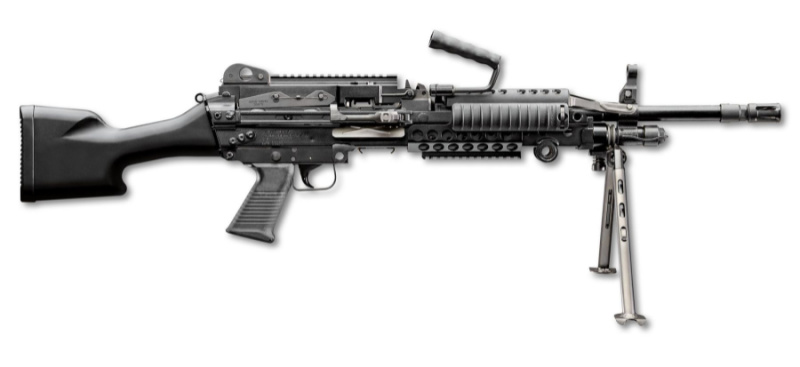
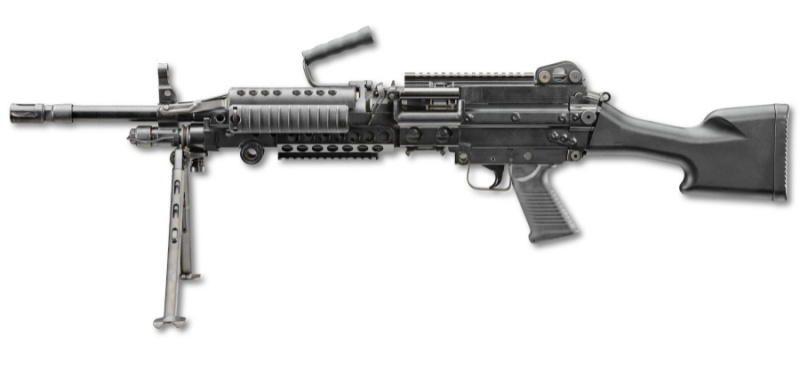
The MK48 was designed to minimize weight while still being a reliable, durable weapon system. It features, for example, a titanium bipod. It has been a success in its intended role, but there are tradeoffs. It is not a replacement for a proper general-purpose machine gun like the M240 and reportedly has about half the useful receiver life of its larger, heavier cousin. However, it represents a serious upgrade in firepower over the SAW while not weighing much more than the M249.
